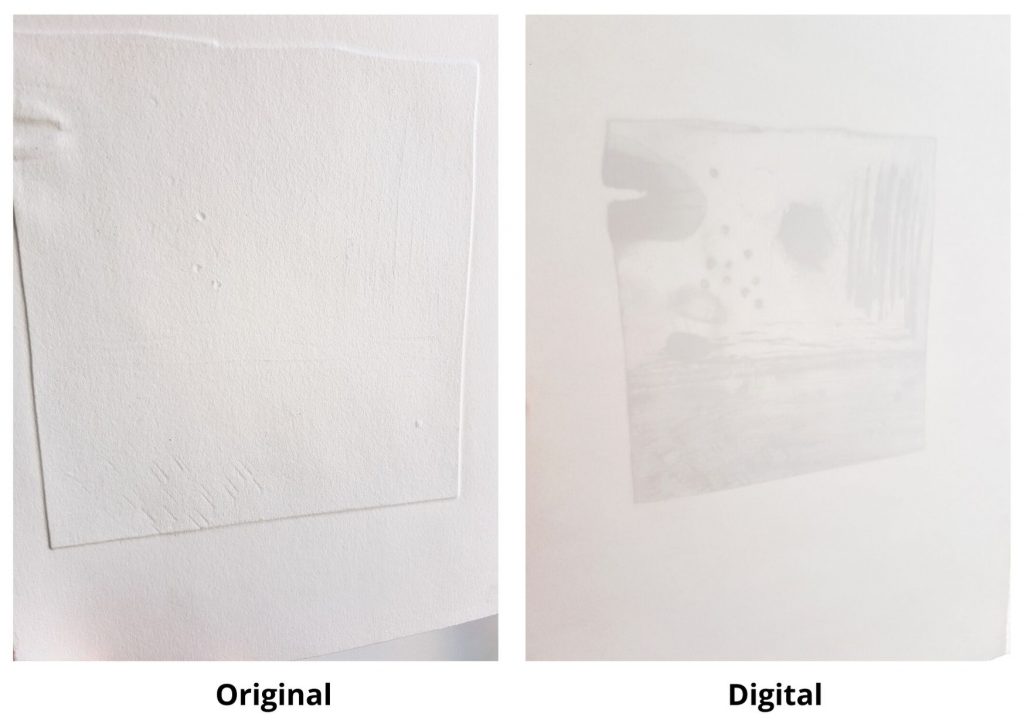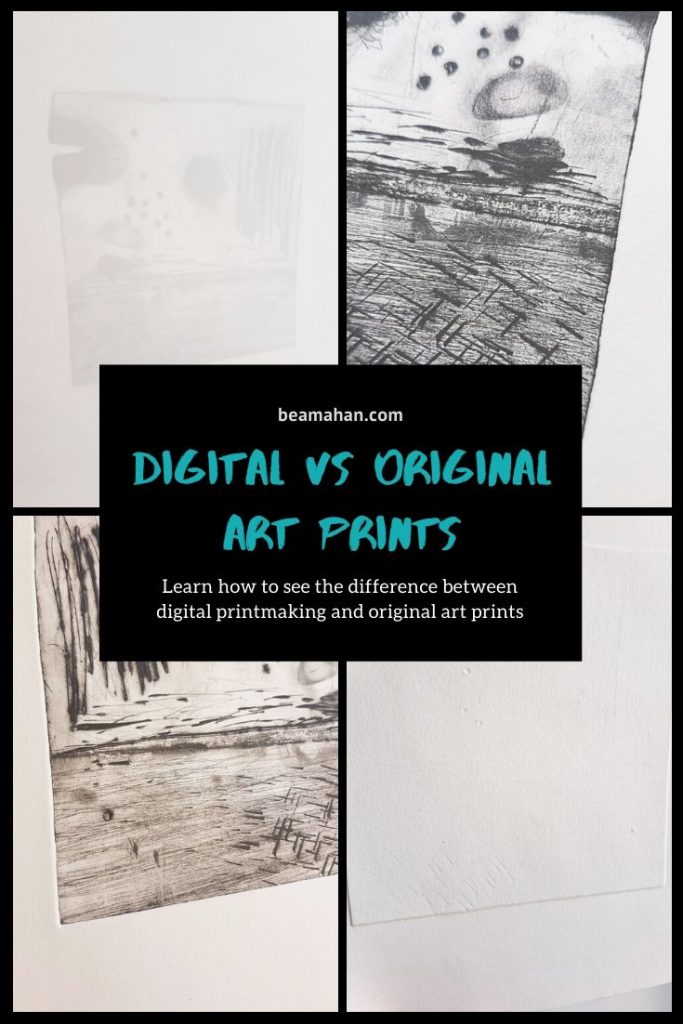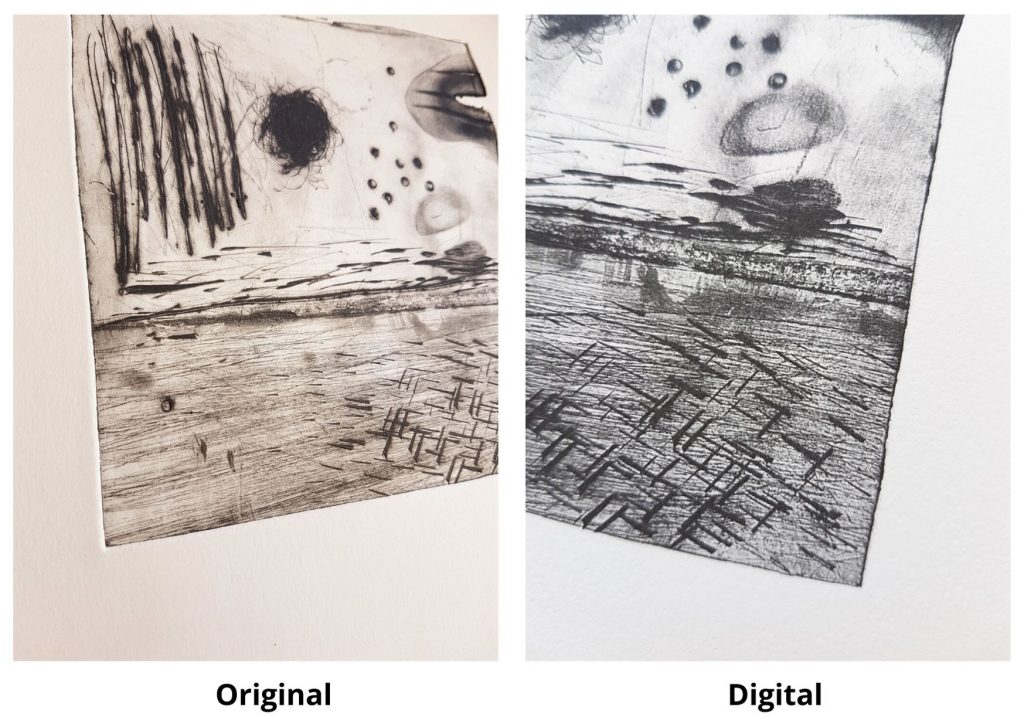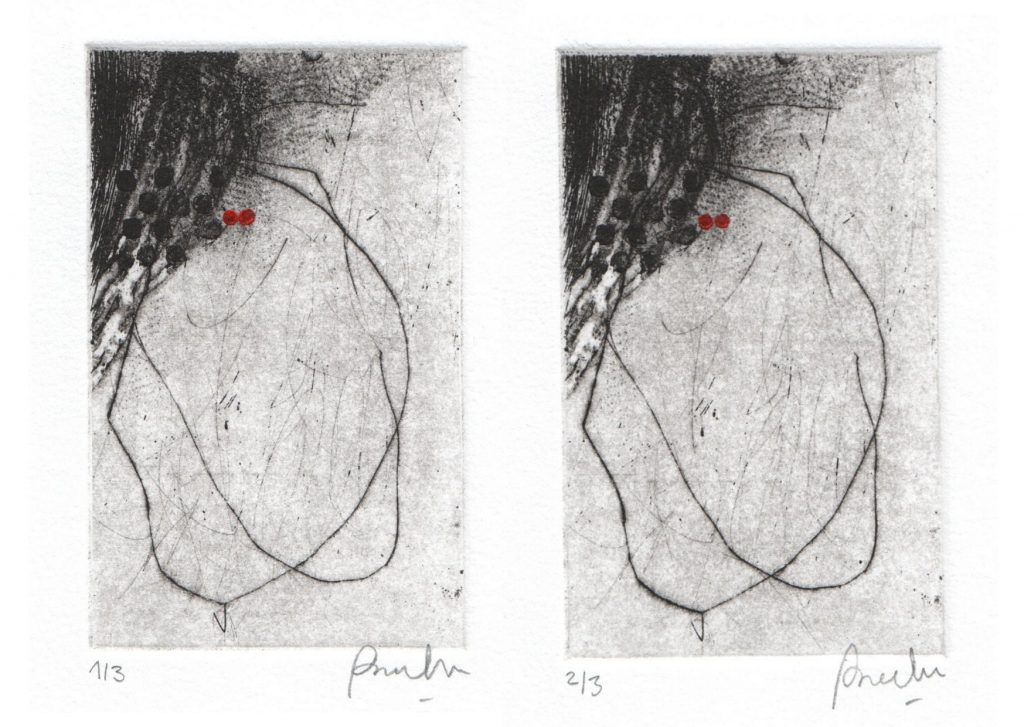Differences between digital and original art prints
How to see the difference between DIGITAL printmaking and ORIGINAL art prints?
With the appearance of digital reproductions within art, we can confuse a handmade piece with a digital one. This happens especially within the world of printmaking, since both techniques generate editions or “copies”.
For me there is only one type of PRINTMAKING, the artisan one! An original printmaking is a handmade craft work. It means that a matrix is carefully made and one or more copies are hand printed from it. Digital impressions, on the other hand, are made by a printer based on a computer image (which can be either a copy of one of our original works, or an image created entirely on the computer) and which is automatically printed without variation. Because it is now possible to make printed editions on a printer, we also speak of digital printmaking. But for me it’s a completely different technique that should not be called printmaking art.
Let’s see some NOTABLE DIFFERENCES that you can see between a hand-print and a digital print:
Textures: if you gently touch the image, you will feel a TEXTURE. In certain engravings or etchings a slight texture or relief can be appreciated due to the pressure of the press on the paper. In digital prints it does not exist.
Mark of the plate on the paper (in the original prints where you can see a border around the image): If you are not sure if it is an original or a digital copy, turn it over and look at its back, you will notice that there is a relief that frames the image. It is the matrix of the print. In digital prints it does not exist.

Edition differences: If you have the opportunity to see several copies at the same time, you will notice that in the original edition there may be certain differences between one copy and another. In the digital edition copies they are all exactly the same.
Price: Being an original copy made by hand, original printmaking tends to be more expensive than digital ones.
Digital reproductions are a very valuable tool for artists, since they allow us to reproduce photographs of our own works, when we do not want to expose or sell the original. I am old fashioned, and I think craftsmanship has a soul and a life of its own thanks to all the manual process behind it… I think it is essential to know the differences in order to better appreciate and understand a work on paper.
And you, do you notice these differences?



